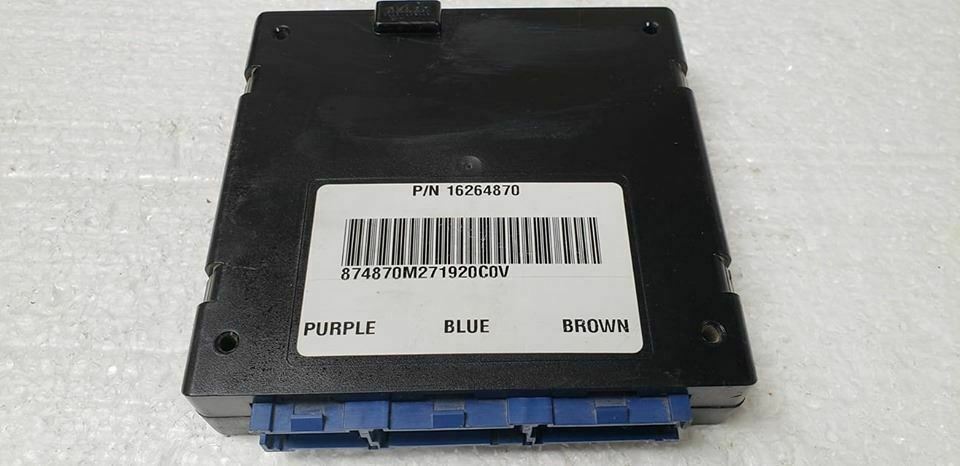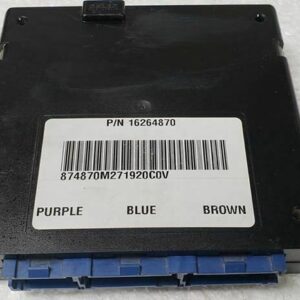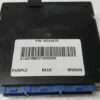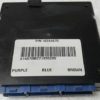Restore Your Truck’s Reliability with a VIN-Programmed BCM
If you’re dealing with a cascade of bizarre electrical problems in your 1998 Chevy Blazer, S10, or GMC Jimmy, you’re not alone. In my 20+ years of diagnostics, I’ve seen firsthand how a failing Body Control Module (BCM) can turn a reliable truck into a source of constant frustration. Symptoms like flickering interior lights, power windows and locks with a mind of their own, a flashing security light, or an intermittent no-start condition often point directly to this central computer. Don’t waste time and money chasing individual component failures; solve the root cause with a dependable replacement.
This isn’t just a part in a box. This is a complete solution. We take the guesswork and dealership hassle out of the equation by programming this BCM specifically to your truck’s Vehicle Identification Number (VIN) before it ships. This ensures it communicates perfectly with your vehicle’s other modules, loaded with the latest GM software updates for optimal performance. You get a part that’s ready for installation right out of the box, saving you a costly trip to the dealer for programming.
A Technician’s Notebook: The Haunted ’98 Jimmy
I remember a 1998 GMC Jimmy that came into the shop after visiting two other garages. The owner was at his wit’s end. The radio would turn on by itself, the dome light would flicker while driving, and occasionally, the truck would refuse to start, leaving him stranded. Both previous shops had replaced the battery and alternator to no avail. After hooking up my scan tool, I noticed communication errors between several systems, all pointing back to a single source. The culprit was a failing 1998 Blazer BCM. Once we swapped in a correctly programmed module, every single one of the ghost-like electrical issues vanished. It’s a classic case of how this one part can wreak widespread havoc.
Is Your Truck Showing These Symptoms?
- ✔ Erratic or non-functional power windows, door locks, or mirrors.
- ✔ Interior lights or dashboard lights flickering or staying on.
- ✔ The security or anti-theft light is flashing, causing a no-start condition.
- ✔ Intermittent failure of the radio or climate controls.
- ✔ Inconsistent horn operation or alarm sounding randomly.
- ✔ Communication DTCs (Diagnostic Trouble Codes) like U-series codes stored in other modules.
A Straightforward Guide to BCM Installation
- ✔ Safety First: Always disconnect the negative terminal from your vehicle’s battery before beginning any electrical work.
- ✔ Locate the BCM: On most 1998 Blazer, Jimmy, and S10 models, the BCM is located in the center of the dashboard, often behind the glove box or a lower dash panel. Access may require removing a few trim pieces.
- ✔ Disconnect and Remove: Carefully unplug the electrical connectors from the old BCM. They have locking tabs that need to be depressed. Once disconnected, unbolt or unclip the module from its mounting bracket.
- ✔ Install the New Module: Seat your new, pre-programmed BCM into the mounting bracket and secure it.
- ✔ Reconnect Everything: Firmly plug all electrical connectors back into the new BCM. You should hear a click as they lock into place.
- ✔ Power Up: Reconnect the negative battery terminal. Turn the key to the ‘On’ position and verify that your interior accessories are functioning correctly.
- ✔ Post-Installation Checks: Start the vehicle. Note if any warning lights, such as the airbag light, remain on. If so, a post-install procedure may be required.
Important Post-Installation Information
While this 1998 Blazer BCM is designed for a direct fit, GM vehicles of this era sometimes require a ‘handshake’ between modules after a replacement. Be aware of the following potential procedures:
- Airbag System Sync: If your airbag warning light is illuminated after installation, it means the new BCM and the airbag’s Sensing and Diagnostic Module (SDM) need to be synchronized. This requires a professional scan tool to perform the ‘Setup SDM Primary Key in BCM’ procedure.
- Brake Pedal Position Relearn: In some cases, a recalibration of the brake pedal position sensor may be needed to ensure correct brake light and traction control operation.
Verified Vehicle Compatibility
This module is a direct replacement for several original part numbers, ensuring broad compatibility. Please verify your vehicle and original part ID below.
This part directly replaces part numbers: 09366803, 16264870, 16268395, 8093668030, 8162683950
- 1998 Chevrolet Blazer S10 / GMC Jimmy S15: Body Control (BCM); (center dash), ID 16264870, 16268395, or 9366803
- 1998 Oldsmobile Bravada: Body Control (BCM); (center dash), w/o extended build date
- 1998 Isuzu Hombre: Body Control (BCM); (LH dash)
- 1998 Chevrolet S10 / GMC Sonoma S15: Body Control (BCM); (center dash), ID 16268395
Frequently Asked Questions
How does the VIN programming service work?
After you complete your purchase, simply send us your vehicle’s 17-digit VIN. Our technicians will use it to load the correct GM-certified software and vehicle-specific settings onto the BCM before shipping it to you. This makes installation much simpler.
Do I need to return my old BCM?
No. There is no core charge for this part. You can keep your old module, which saves you the time and expense of return shipping.
Will this fix my Passlock security issue?
A faulty BCM is a very common cause of Passlock anti-theft system problems, which can prevent the vehicle from starting. Replacing the BCM with a correctly programmed unit often resolves these issues, but a separate security relearn procedure may still be necessary after installation.
What happens if my airbag light comes on after I install it?
This is not a defect but a security feature. The new BCM needs to be electronically introduced to the airbag module (SDM). A repair shop with a bi-directional scan tool can perform the ‘Setup SDM Primary Key in BCM’ procedure in a few minutes to turn off the light.
Is this a difficult part for a DIYer to install?
For someone with basic mechanical skills and common hand tools, this is a very manageable job. The primary challenge is accessing the module’s location within the dashboard. Since we handle the programming, the most complex part of the job is already done for you.



